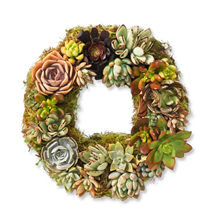By Pat Naughton

October is a good time to begin to prepare outdoor plants for moving indoors for the winter. First check to see if the plant has any unwanted insects like aphids, mealybugs, and spider mites. It might be a good idea use a hose and wash the plant off before bringing it inside. Treating the plant with neem oil can help as well. If the plant has grown over the summer, prune or repot the house plant to reduce its size. If you are pruning it back, don’t prune back more than one-third of the plant. Also prune the roots an equal amount as you did the foliage. If you are repotting, use a container that is at least 2 inches larger than the current container.
When acclimating a houseplant start by bringing the house plant in at night. Do this for a few days. Over the next two weeks gradually increase the amount of time the plant spends indoors until it is indoors full time. This should be done before the first frost. For Brunswick Co. the average first frost is November 5th.
Light, water, temperature, air movement, humidity, fertilization, and proper growing medium are the key factors that affect plant growth. Most outdoor plants are accustomed to high to medium amounts of light. Try to find a location indoors near a window that gets sun. Clean the window to increase the amount of light coming through. Windows can lose heat in a room and create a cold spot. If the window begins to feel cold, move the plant at least a 6 inches away from the window. Most houseplants grow best in day temperatures around 70ºF and night temperatures around 60ºF. Avoid placing plants in locations that are subject to periodic cold drafts, like outside doors.
Many houseplants can grow in relative humidity levels of 40% to 60%. The typical humidity level in homes is only 10% to 15%. To increase the humidity level around plants group them together. Grouping plants closely together forms a canopy of leaves. The leaves transpire and create moisture but also trap moisture from the air, creating a humid climate around the plants. It is also beneficial to place pebbles in a saucer and place the plant on it. Pour in just enough water to where the water is just below the top of the pebbles. Do not allow the plant container to contact the water this could allow any fertilizer that that leached out to be absorbed back in and may burn the roots. In addition, the pot can become waterlogged, causing the plant to develop root rot. Misting plants with a water bottle only raises the humidity for a short period of time and is not useful. Plants need less water indoors so let the soil dry out before watering.
For more information on growing plants in containers visit, https://content.ces.ncsu.edu/extension-gardener-handbook/18-plants-grown-in-containers
